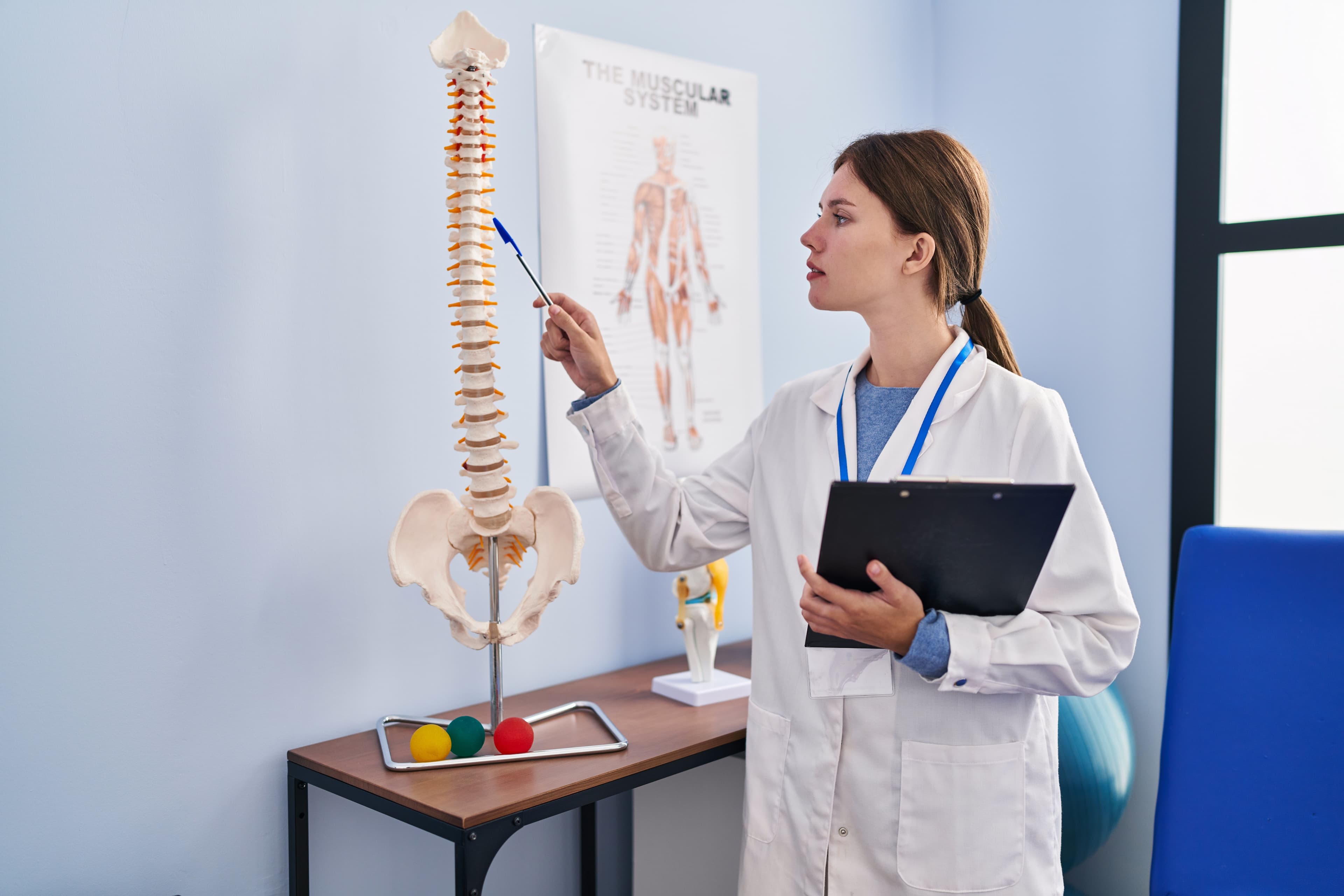Understanding the importance of the spine
The spine is an essential structure of the human body. It plays a crucial role in our mobility and posture. Composed of 33 vertebrae, it supports the weight of the body and protects the spinal cord.
However, many people underestimate its importance until pain occurs. Understanding its anatomy and functions can help prevent problems.
In this article, we will explore the key aspects of the spine. We will also discuss common causes of pain and ways to maintain a healthy spine. Adopting good habits can make a big difference to your daily well-being.
Anatomy of the spine
Structure and diagram
The spine is a complex and ingenious pillar. It is divided into five distinct sections(1). Each section has its own characteristics and functions.
- Cervical vertebrae: This section comprises the first seven vertebrae. These vertebrae are light and flexible.
- Thoracic vertebrae: This section has twelve vertebrae. They are less mobile because they articulate with the ribs.
- Lumbar vertebrae: Composed of five vertebrae, this section supports most of the body's weight(4).
- Sacral vertebrae: Formed by five fused vertebrae, it articulates with the pelvis.
- Coccygeal vertebrae: Consisting of four small vertebrae, they form the end of the spinal column.
The vertebrae are separated by intervertebral discs that act as shock absorbers. These discs prevent friction and absorb shocks. The stability of the spine is ensured by a set of ligaments and muscles. These elements provide both stability and flexibility(2).

The essential functions of the spine
The spine is crucial to our daily lives. It provides central support for the entire body. Thanks to it, we can stand upright and move around.
It protects the spinal cord(3) that runs through its centre. This cord is essential for neurological communication in the body. Without this protection, our nervous functions would be vulnerable.
The main functions of the spine include:
- Supporting the weight of the head and trunk.
- Enabling flexibility and range of motion.
- Protecting the spinal cord.
The natural curvature of the spine absorbs shocks. This ensures smooth movement and reduces tension on the vertebrae. In short, the spine is the central pillar of our body structure.
The 33 vertebrae of the spine: divisions and specific roles
The spine is made up of 33 distinct vertebrae. They are divided into five sections, each with a specific function. This complex structure supports the body efficiently.
The divisions of the spine include:
- Cervical: 7 vertebrae that support the head.
- Thoracic: 12 vertebrae that articulate with the ribs.
- Lumbar: 5 vertebrae that bear the weight of the upper body.
- Sacral: 5 fused vertebrae forming the sacrum.
- Coccygeal: 4 vertebrae forming the coccyx, or "tailbone".
Each segment plays a unique role. The cervical vertebrae offer great mobility, allowing for fluid neck movements. The lumbar vertebrae, which are more robust, support weight and allow for limited but essential flexibility. This precise division ensures harmony between stability and flexibility.
Causes and types of spinal pain
Spinal pain can result from many causes. Injuries, such as sprains or fractures, are common. They can cause acute pain.
Poor posture is another common cause of pain. Spending long hours sitting with a hunched back can lead to chronic pain. Degenerative diseases, such as osteoarthritis, also affect the spine.
Types of pain include:
- Acute: sudden and intense pain, often due to injury.
- Chronic: persistent pain, often due to poor posture or a medical condition.
- Radicular: pain that spreads, caused by nerve compression.
Each type requires a specific treatment approach. A thorough understanding of the causes is essential for effective relief.
Prevention and tips for a healthy spine
Maintaining a healthy spine is crucial for overall well-being. Correct posture helps prevent pain. Ensure your shoulders are aligned with your hips.
Regular exercise strengthens the muscles that support the spine. Prioritise stretching and strengthening exercises. Yoga and Pilates are particularly beneficial.
Here are some tips to follow:
- Avoid lifting heavy objects on your own. Use your legs, not your back.
- Use ergonomic furniture at work. A good chair can make a big difference.
- Stay hydrated. Proper hydration helps maintain the health of the intervertebral discs.
Adopting a balanced lifestyle is essential. This includes a healthy diet and maintaining a healthy weight. These habits help reduce stress on the spine.
When should you consult a healthcare professional?
It is crucial to know when to seek help. Do not ignore persistent pain in your spine. It could signal a serious underlying problem.
Here are some signs to watch out for:
- Pain that does not go away with rest or medication.
- Numbness or weakness in the limbs.
- Loss of bowel or bladder control.
If you experience these symptoms, see a doctor promptly. Early evaluation can prevent more serious complications. It is better to be cautious and avoid aggravating a spinal problem.
Conclusion: protecting your spine on a daily basis
Taking care of your spine is essential for an active, pain-free life. This requires healthy lifestyle habits and constant attention to posture.
Leading a balanced life that includes regular exercise and proper nutrition can make a big difference. Listen to your body and don't hesitate to consult a healthcare professional if necessary. Protecting and maintaining your spine today ensures a better quality of life tomorrow.
1 SAGET, M. & La Rochelle-Ré-Aunis Hospital Group - Rochefort Hospital Centre. (n.d.). ANATOMY OF THE SPINE. https://www.ch-larochelle.fr/app/uploads/sites/7/2023/08/Anatomie-de-la-colonne-vertebrale-ok.pdf
2 Hukins, D., & Meakin, J. (2000). Relationship Between Structure and Mechanical Function of the Tissues of the Intervertebral Joint1. , 40, 42 - 52. https://doi.org/10.1668/0003-1569(2000)040[0042:RBSAMF]2.0.CO;2.
3 Galbusera, F. (2018). The Spine: Its Evolution, Function, and Shape. , 3–9. https://doi.org/10.1016/B978-0-12-812851-0.00001-X.
4 Waxenbaum JA, Reddy V, Williams C, et al. Anatomy, Back, Lumbar Vertebrae. [Updated 30 July 2023]. In: StatPearls [Internet]. Treasure Island (FL): StatPearls Publishing; January 2025. Available from: https://www.ncbi.nlm.nih.gov/books/NBK459278/
Photo credit: Shutterstock / No. 2493661985


